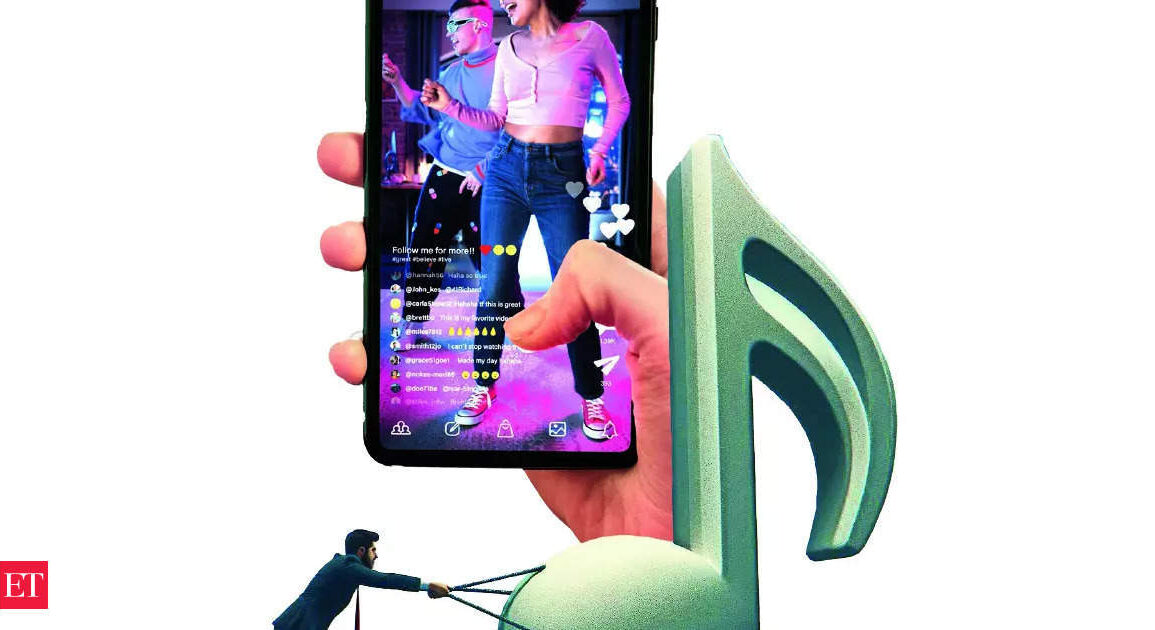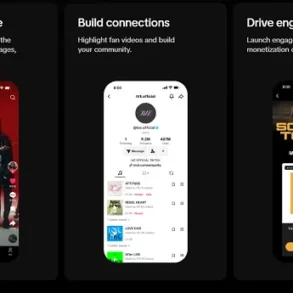
Ankita Shrivastav calls the process of finding the right audio to go with her Instagram posts “a family affair”.
“Everyone pitches in with suggestions, and when I don’t pick their choice, I end up sending apology notes,” says the Mumbai-based actor and standup comedian. She thanks them for at least keeping her up to date with the latest trends in music. Known as @filmychokri on Instagram, where she has nearly 600,000 followers, Shrivastav admits that the music selection process has sometimes delayed the uploading of her posts by 20 to 40 minutes.
“It’s not just about picking a track,” she says. “It has to be aesthetically right, it has to match the story you are trying to tell in the Reel and match the story that’s going on in the world at the time… It has to be today and trending.”
Searching for the perfect audio to go with your content feels more like finding a life partner, Shrivastav adds. “So many boxes to check, so much pressure to get it right.” While idea blocks and monetisation may be their biggest challenges, on a day-to-day basis, many creators struggle to simply find the right audio to complement their content. It’s not just about music enhancing the content; the platform now explicitly tells them that an audio companion will amplify their reach.
Last week, Adam Mosseri, head of Instagram, posted a Reel explaining why he recommends that users incorporate audio in their posts.
“First, using audio makes your content more engaging and immersive.” When audio is on—and half the time people tend to keep it on—you are more likely to capture someone’s attention. Using audio in Reels specifically allows users a chance to appear on the app’s Audio page, too, he adds. “Many people go to the Audio page for inspiration. This exposure can also help increase your reach,” Mosseri says in his video that, ironically, has no audio beyond his voiceover. Instagram helps users find trending audios by highlighting them in its audio library and marking them as “trending” when they appear elsewhere on the app. This year, the Meta-owned app launched several audio features, including music on profile, “Add Yours” music sticker, music in content notes, music in mixed-media carousels and multitrack audio on Reels. “For creators, music often serves as the starting point for an idea, which they then bring to life,” says Paras Sharma, director–global partnerships, India, Meta. “These features allow users to express themselves through humour, dance and dialogue, and make their content more engaging,” he adds.
Among the latest trending audios, Karan Aujla’s “Tauba Tauba” from Bad Newz has inspired nearly 4 million Re e l s, wh i l e A k s h a t h A c h a r y a ’ s “Nadaaniyan” is the background for about 2.4 million Reels. Though the former lends itself to dance videos predominantly, the latter has been used in Reels of varying themes, ranging from romance to drama to comedy. However, the problem with trending audio, says Mandar Thakur, CEO of Times Music, is that “no one knows if too”.
People often use trending regional music without considering that the lyrics might not align with their content’s theme, but a discerning audience can spot the mismatch. Creators also complain about not being able to find the music of their choice. Thakur reckons that short-video-sharing platforms are fairly young. “Their audience has evolved faster than the product, so they seem to be catching up and building use cases,” he adds.
Meanwhile, creators have found ways to bypass Instagram’s limited music library. For instance, “A creator looking for horror audio might add their own music to the video while editing but would choose a trending track from Instagram’s library when posting,” says Shubhi Raina, head of content at Hypp. “They lower the trending audio’s volume to 0 or 2, so their preferred audio stands out while the trending track boosts engagement.”
However, using external audio often leads to copyright strikes from labels, which can mute the original audio and make the content inaccessible. Today, how an audience perceives content largely depends on the music, says Raina. “A rant with serious music feels different from one with a comedic tune.”
She points to “Ja Chudail” from Delhi Belly, which works as both party anthem and heartbreak song “Maybe Instagram should introduce a ‘songmoji’ feature to let users search songs by the emotion or intent they want to convey,” she suggests, in all seriousness. Even amateur creators are in the rush to find the perfect song.
Niharika Gotety, a business strategist at a consumer internet company in Gurgaon, admits to listening to trending Instagram audios (in full) just to find the right beats for her posts. “I save Reels for future audio and keep a private playlist of songs with good beats,” she says. At times, she has skipped posting a Reel and chosen static images since she couldn’t find the right music.
“Videos need music,” says Gotety. “It’s like ASMR—it taps into the part of your brain that craves perfectly synced beats and visuals. That’s why even random audio can go viral when it matches the video, satisfying our need for synchronisation.” This frenzy has made content creation on the app revolve around a trending, 15-second track, says Akshat (@akshatgram), a comedian-creator from Delhi.
“When your reach relies on the music in your post, it starts to dictate your content, often stifling creativity,” he says. For example, while “Big Dawgs” is a great track, it doesn’t fit every sentiment. Personally, he tackles the audio dilemma by “not caring too much” and sometimes using nothing or anything.
He does, however, worry what will happen if “the entire ecosystem accepts that you can’t go viral with your own song choice”. “Then everyone will just dance to a ‘Tauba Tauba’ to get noticed.”
(Disclosure: Times Music (Global Rhythm Limited) is a subsidiary of Times Group, which publishes ET. )
This post was originally published on this site be sure to check out more of their content








